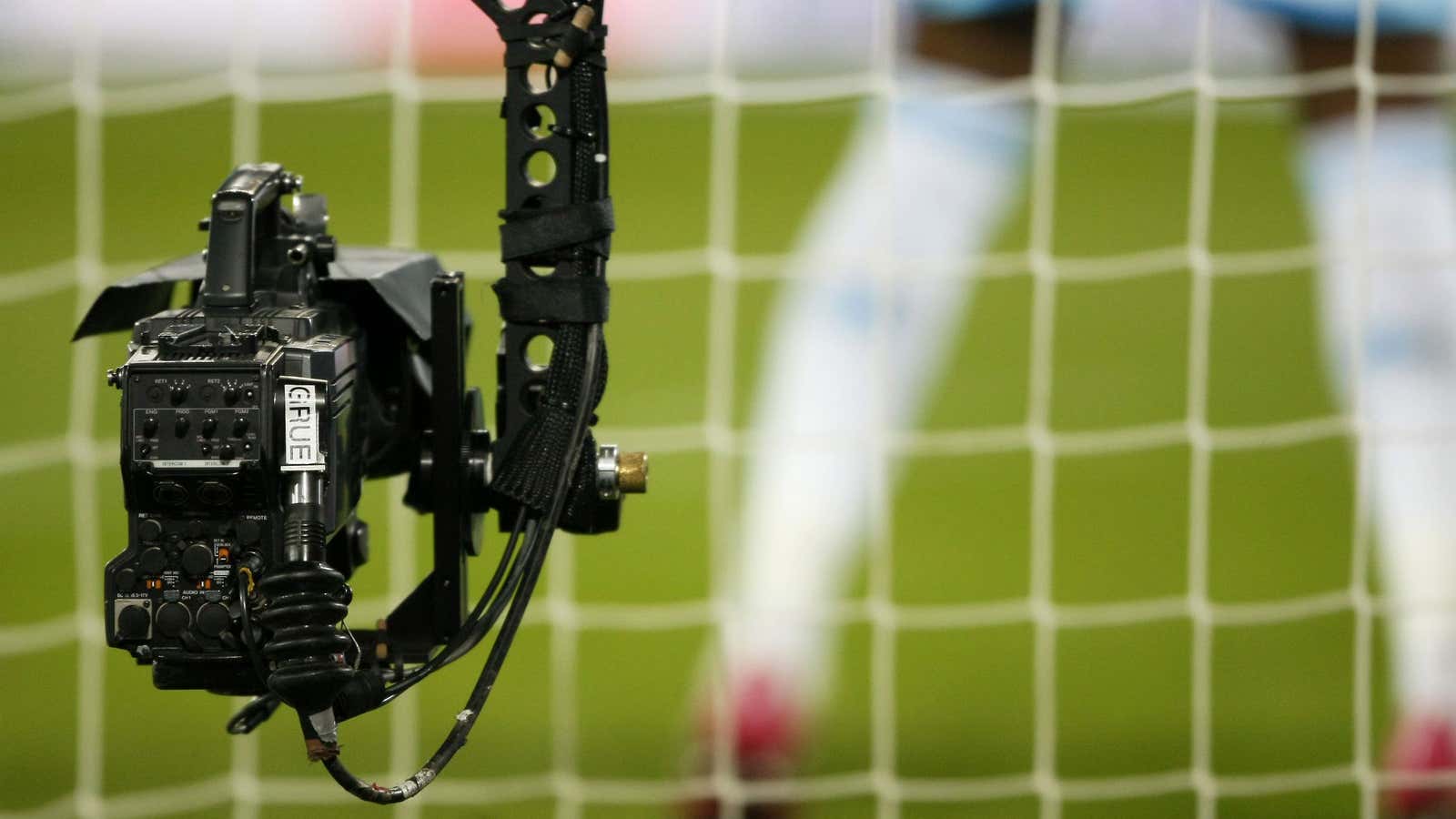Most of the world can watch the World Cup for free. Not so much in the US.
The tournament, which begins today, will largely air on cable; streaming matches online also requires a television subscription. But there are a few options for so-called cord cutters who don’t pay for TV but still want to watch the World Cup.
Why the US is different
Disney paid about $100 million to broadcast the 2010 and 2014 tournaments in the US. It will show this year’s World Cup on three of its popular channels: 43 matches on ESPN, 11 on ESPN2, and 10 on ABC. (Here is the schedule.)
Related: Add all World Cup matches to your calendar in 15 seconds
Only the matches on ABC can be seen for free, and that has to be done the old-fashioned way: with an antenna. They can’t be streamed online without paying for access. Disney is increasingly protective of its channels, including the once-free broadcast network ABC, as it charges cable companies more and more to carry them. Cable companies don’t want that programming to be freely available online.
The situation is quite different in other countries. Many require that the home nation’s matches are aired on free TV. (All three of the US team’s group matches, by contrast, are on ESPN.) And in Europe, the rights to broadcast the World Cup were purchased by a continent-wide coalition of networks that are generally available for free on television and the internet. Britons, for instance, can watch the entire tournament on the BBC and ITV. Germans will get the whole thing on ARD and ZDF.
The Univision strategy
But all is not lost for American cord cutters, as long as they don’t insist on watching the games in English. Univision owns the Spanish-language broadcasting rights, and will stream all of the matches—until the quarterfinals—without requiring a pay-TV subscription. The network is also available for free over-the-air in most parts of the country, which would cover the later rounds.
Those taking the Univision approach will be in good company: During the last World Cup, the Spanish-language network had twice as many viewers as ESPN for the first match of the tournament.
The VPN tactic
Most restrictions on watching TV over the internet depend on knowing where you are located, and that is easily spoofed. Virtual private networks (VPNs), which are used for many legitimate purposes, will inevitably help people pretend they are in Canada, the United Kingdom, or any other country where the World Cup can be streamed online for free.
VPNs were once considered an advanced web tool, but free and easy-to-use services like Hola have made them mainstream. Some are hoping to capitalize on the inevitable interest in getting around World Cup viewing restrictions: UnoTelly, which usually charges for its VPN service, is offering a 40-day free trial during the tournament and pointing people to streams in other countries.
The Aereo free kick
The 10 games airing on ABC include the title match on July 13. To watch that without a TV subscription, you could put an antenna in the air—or make a bet on Aereo, a service that essentially does that for you. Aereo delivers broadcast TV signals over the internet in 11 US cities for $8 a month. Taking advantage of Aereo’s 30-day free trial is a way to watch the title match without paying.
However, ABC and the other major broadcast networks have sued Aereo, calling it an obvious copyright violation. Its legality is the subject of a case before the US Supreme Court, which is likely to be decided this month. The whole service may very well be shut down before the World Cup is over, at which point it would be back to antennas not connected to the internet.
Or, perhaps most simply, just head to a bar.




